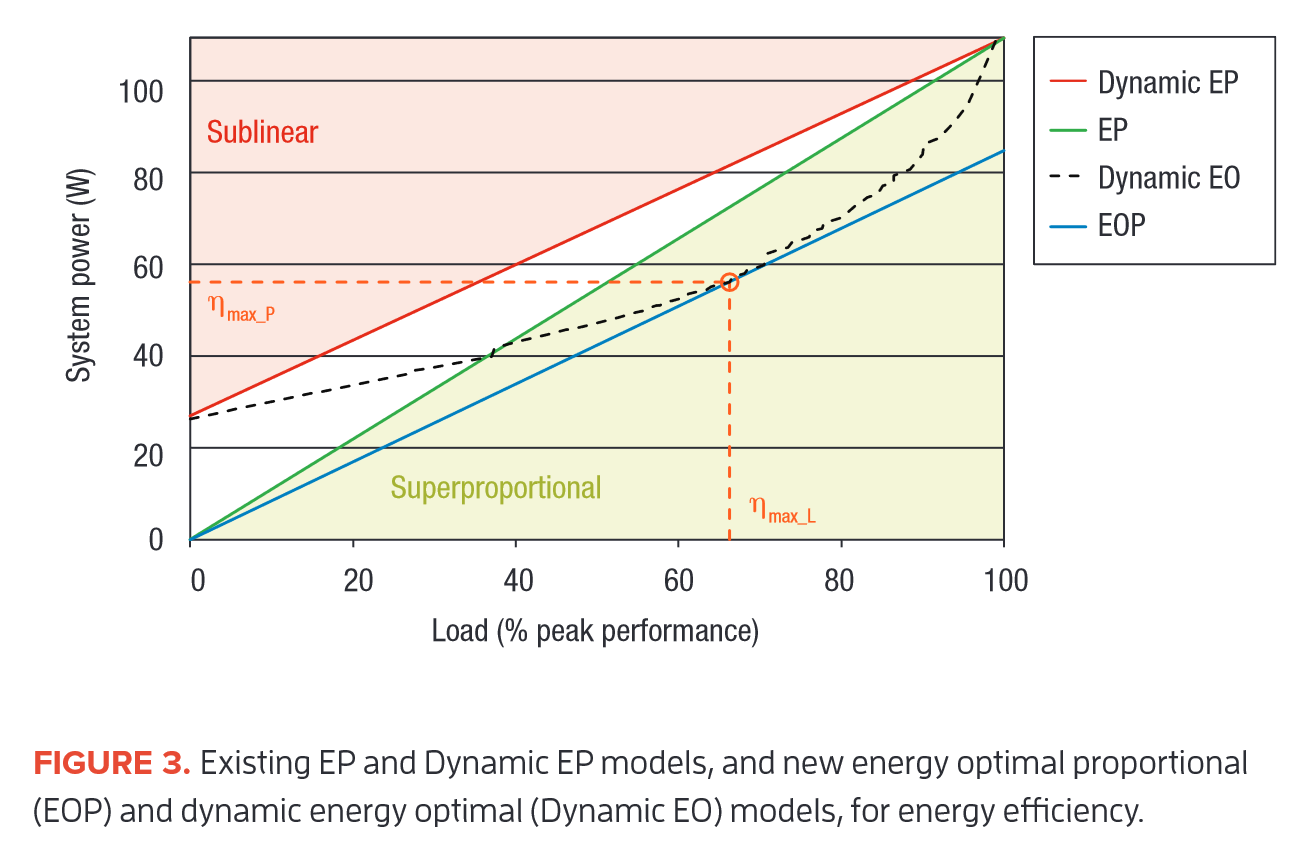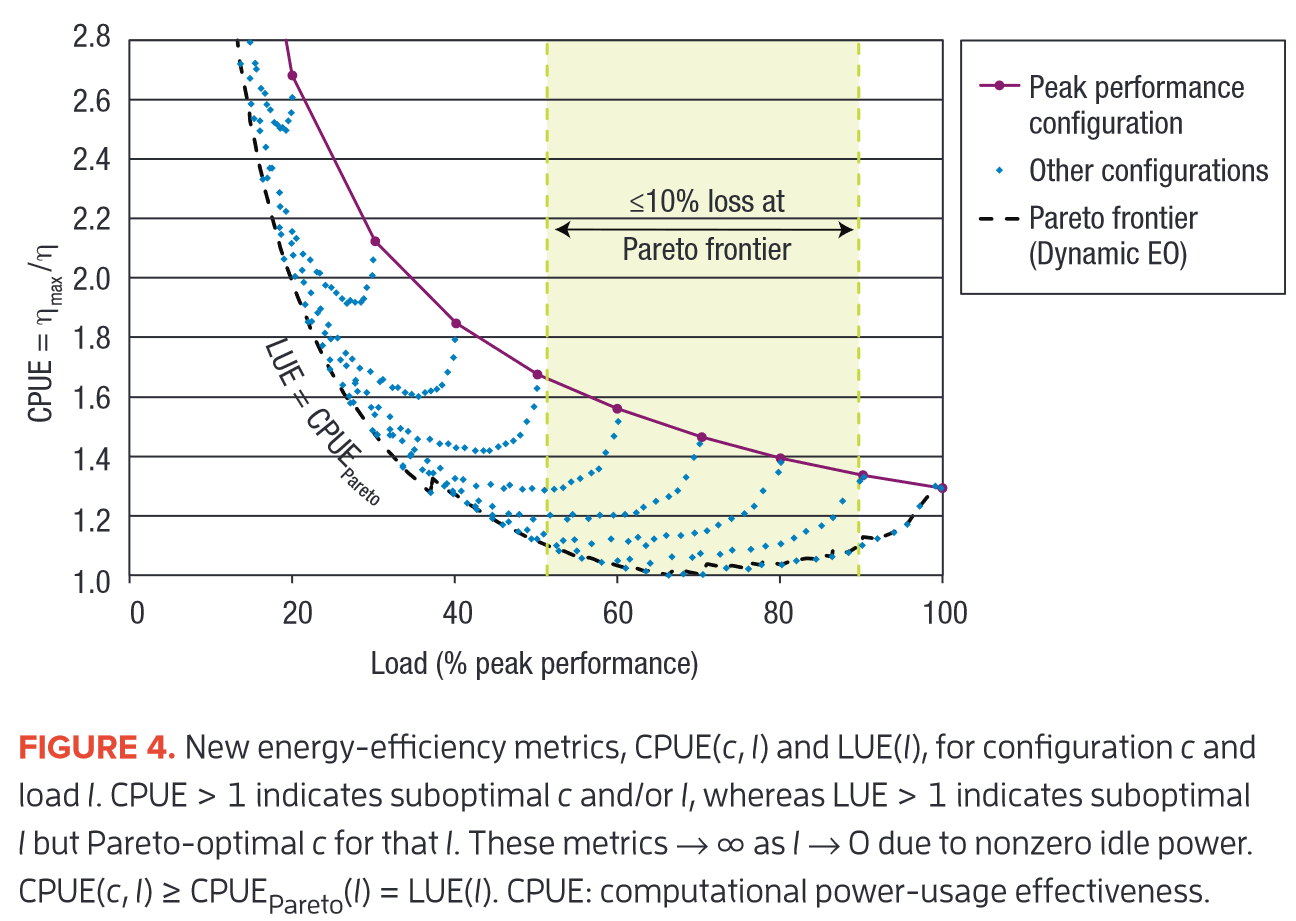Energy-Proportional Computing: A New Definition
Status:: 🟩
Links:: @Barroso.Holzle.2007.CaseEnergyProportionalComputing Power Proportionality and Idle Power Consumption of Servers
Zotero Tags:: #zotero/green_software
Metadata
Type:: #zotero/journalArticle
Authors:: Sen, Rathijit; Wood, David A.
Title:: Energy-Proportional Computing: A New Definition
Publication Title:: "Computer"
Date:: 2017
URL:: https://ieeexplore.ieee.org/document/7999152
Bibliography
Sen, R., & Wood, D. A. (2017). Energy-Proportional Computing: A New Definition. Computer, 50(8), 26–33. https://doi.org/10.1109/MC.2017.3001248
Zotero
Abstract
A new energy-proportional computing model extends Barroso and Hölzle's original definition for fixed-resource systems to aid in the design of more efficient modern systems with reconfigurable resources that can be varied at runtime.
Notes & Annotations
📑 Annotations (imported on 2023-04-03#14:25:51)
In 2007, Luiz André Barroso and Urs Hölzle observed that real systems attain peak efficiency at peak utilization but quickly lose efficiency as utilization drops because they are unable to proportionately reduce power consumption.1 They posited that an ideal energy-proportional (EP) system should always use energy in proportion to the work done by maintaining this peak efficiency, even at a reduced load.
Barroso and Hölzle’s observation has been instrumental in driving the recent design of systems with lower idle power and a wide dynamic power range. However, their model describes systems with fixed resources, while these more efficient modern processors have reconfigurable resources—core frequencies, voltages, number of active cores, threads per core, and so on—that can be varied at runtime.
The EP model assumes that maximum energy efficiency occurs at maximum (100 percent) load and argues that an ideal system should achieve that efficiency for all loads. Yet Figure 2 shows that a reconfigurable server actually attains maximum efficiency (ηmax) at a lower load (ηmax_L < 100 percent). We argue that a better ideal model is one that achieves this optimal efficiency ηmax for all loads. We call this new model energy optimal proportional (EOP), because it is both optimal and proportional.
We call this model dynamic energy optimal (Dynamic EO). Like Dynamic EP, it is an operational ideal that seeks to characterize the best energy efficiency a given system can achieve. But it differs from Dynamic EP in two aspects: it characterizes optimality that can already be realized by some among the multitude of configurations in the current system, and it does not assume linearity of the powerperformance profile. Figure 3 illustrates the different models.
Our new metric, computational power-usage effectiveness (CPUE), measures how much energy a server uses with configuration c at load l compared to the energy used by EOP: CPUE(c, l) = Actual server energy with c at l/EOP energy at l, l > 0 = E(c, l)/Emin, l > 0 Thus, E(c, l) = CPUE(c, l) × Emin, l > 0.
PUE > 1 quantifies excess relative energy used by the datacenter due to the non-IT infrastructure. Similarly, CPUE(c, l) > 1 quantifies excess computational energy used, relative to Emin, whenever efficiency drops below ηmax.

Figure 4 shows that CPUE for the peak-performance configuration is always >1 (wastes energy) and increases as load decreases. The best CPUE for this configuration is 1.29, occurs at peak load, and implies 29 percent excess energy used relative to Emin. LUE (that is, CPUE for Dynamic EO), on the other hand, first decreases to 1 and then increases, revealing a sweet spot of ≤10 percent excess energy used at around 51–90 percent of peak performance.
A number of metrics for characterizing energy efficiency exist. Efficiency (performance/power) can be computed at individual loads,1 or as total performance/total power over all loads.6 Metrics based on the dynamic power range compute the ratio between the idle and peak power consumptions.3 Other metrics consider the deviation of the power curve from an ideal curve, for instance, maximum relative power difference with respect to Dynamic EP,3 area enclosed by the power curve relative to that by Dynamic EP4 or EP,4,7 and power used in excess of that by EP.4
